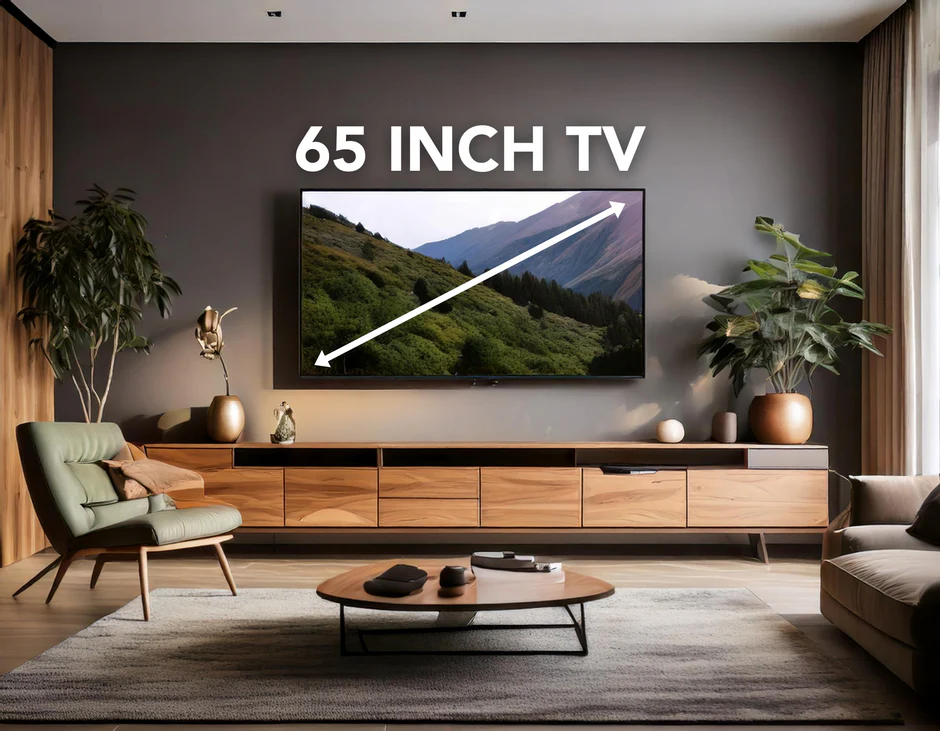
In the age of home theaters and immersive entertainment, choosing the right TV size is critical. Among the most popular sizes, the 65-inch TV stands out for its balance of screen real estate and room compatibility. However, when consumers hear “65 inches,” they might mistakenly believe this is the TV’s width. What the size really indicates is the diagonal span of the screen, which doesn’t match the TV’s full width . This article explores the precise width of a 65-inch tv, factors that affect it, and how to plan your space accordingly.
What Does “65-Inch TV” Really Mean?
A TV labeled as 65 inches is measured diagonally from one corner to the other, which doesn’t reflect the screen’s full dimensions. Because of this common misconception, buyers often struggle to visualize whether the TV will actually fit on a wall or entertainment unit.
Understanding the dimensions beyond the diagonal is essential for practical placement, especially in modern homes where space optimization is a key concern.
Average Width of a 65-Inch TV
Standard 65-inch TVs usually range from 56.7 to 58 inches wide (144 to 147 cm), with minor variations based on design. Some TVs have thicker bezels or frames, while others boast ultra-slim, frameless designs that maximize screen space.
To get a better idea:
-
A standard 16:9 aspect ratio TV (which is the most common) will measure approximately 56.7 inches (144 cm) wide.
-
The height of the same TV is generally around 31.9 inches (81 cm).
You can estimate the width using this simple formula:
Width ≈ Diagonal × 0.87
So, for a 65-inch TV:
Width ≈ 65 × 0.87 = 56.55 inches
This approximation gives you a reliable starting point, but always check the manufacturer’s specifications for precise dimensions.
Factors That Affect the Width
A 65-inch TV’s width is shaped by multiple design and engineering elements:
1. Bezel Size
The bezel is the frame around the screen. TVs with ultra-thin or bezel-less designs have a width closer to the screen size. In less expensive or older designs, thicker bezels may add an extra 1 to 2 inches to the TV’s total width.
2. Curved vs. Flat Screens
Curved TVs may measure similarly in width, but the curvature can impact placement and wall-mounting decisions. While the physical width might be close to a flat screen, the spatial footprint could differ.
3. TV Stand or Legs
If you’re not wall-mounting, consider the width of the legs or base. Some models come with widely spaced legs that need more space than just the screen width.
4. Brand and Design Style
Manufacturers design TVs differently. For instance, Samsung, LG, Sony, and TCL may each have 65-inch models with slightly different dimensions based on design aesthetics and component housing.
Measuring Your Space: Tips for Placement
Before investing in a 65-inch TV, evaluate your available space to ensure a proper fit .Here are a few tips:
-
Wall Mounting: Ensure the wall has at least 58 inches of clear horizontal space and 33 inches vertically. Leave extra room on all sides for ventilation and aesthetic balance.
-
TV Stand: Your stand should be wider than the TV or at least match the width of its legs. Look for stands that are 60–65 inches tv width to safely support a 65-inch TV.
-
To ensure a comfortable viewing experience: position yourself 1.5 to 2.5 times the screen’s diagonal measurement from the TV. For a 65-inch TV, that’s approximately 8 to 13 feet away from the screen.
Why Width Matters
The TV’s width isn’t just a number—it affects room layout, decor decisions, and even your viewing experience. A TV that’s too wide for a wall or stand can be a safety hazard and may appear visually overwhelming. Conversely, underestimating the space can lead to awkward arrangements and buyer’s remorse.
Final Thoughts: Matching Size with Style
A 65-inch TV offers a premium viewing experience, but understanding its actual width is essential for a seamless setup. With widths averaging around 56.7 inches and a few more inches depending on the design, you can confidently plan your living space or media room.
When buying a 65-inch TV, always check:
-
The product’s listed width in the technical specifications
-
Reviews or customer images for real-world placement insights
-
Your room dimensions, viewing distance, and mounting or stand options
By paying attention to these details, you ensure your entertainment setup is not only visually striking but also functionally optimized. So next time you consider a 65-inch TV, remember: it’s not just about the diagonal—it’s about making it fit beautifully into your space.
For more and latest articles click here